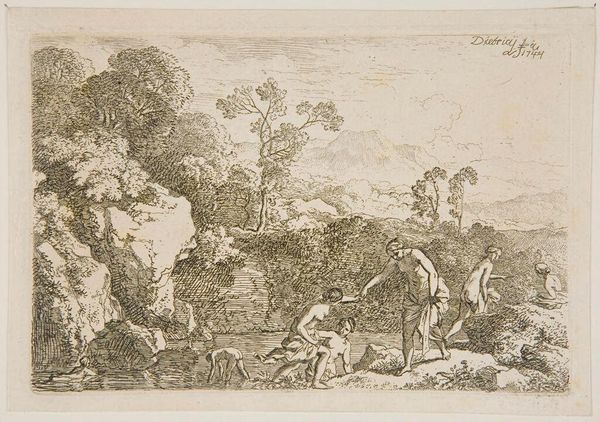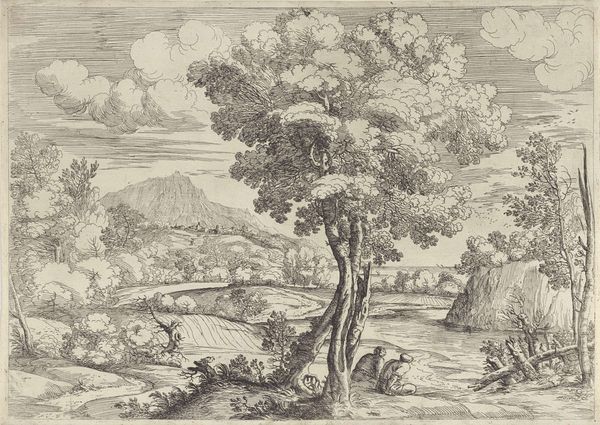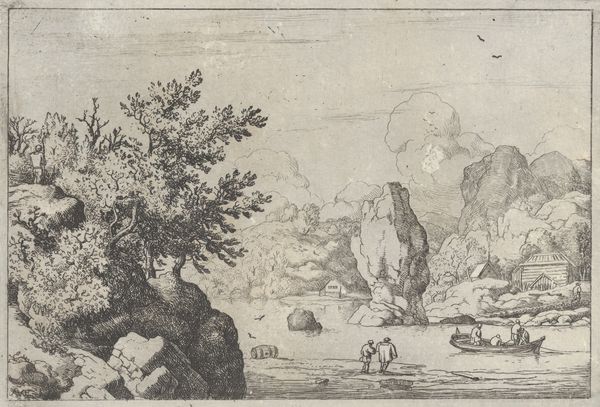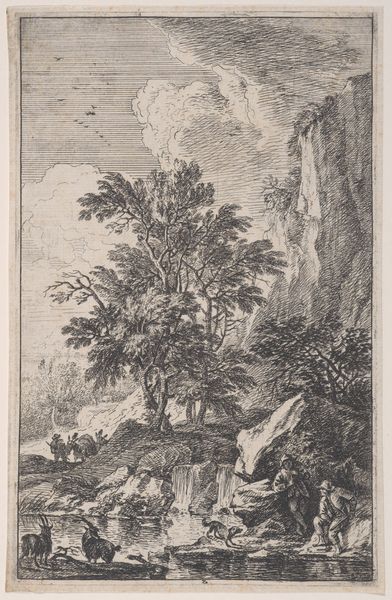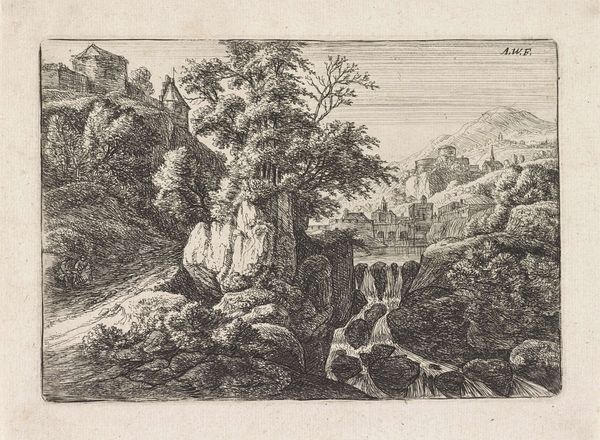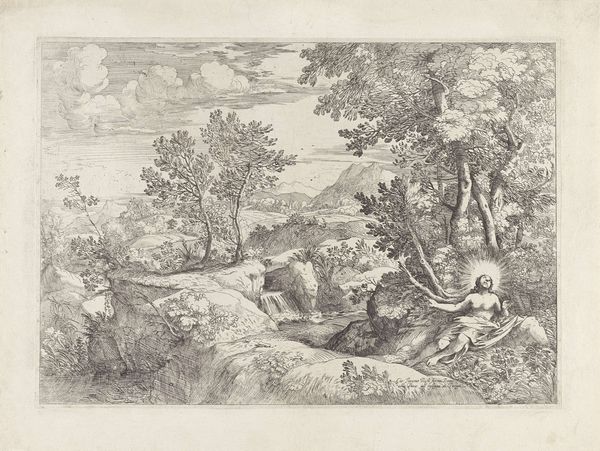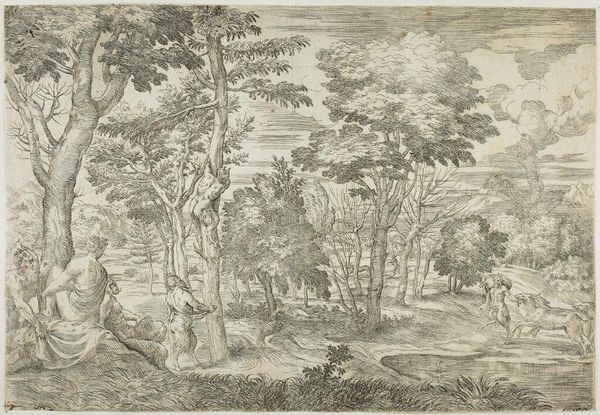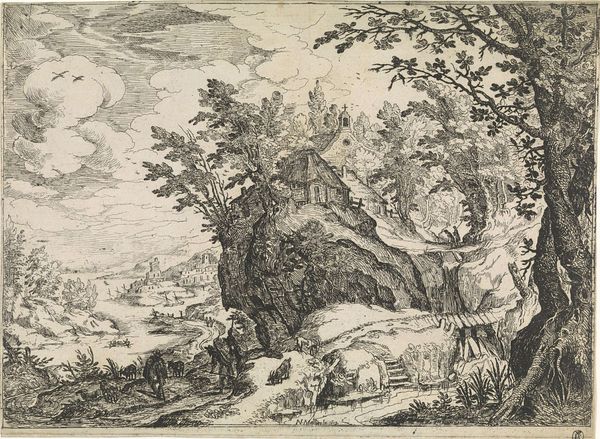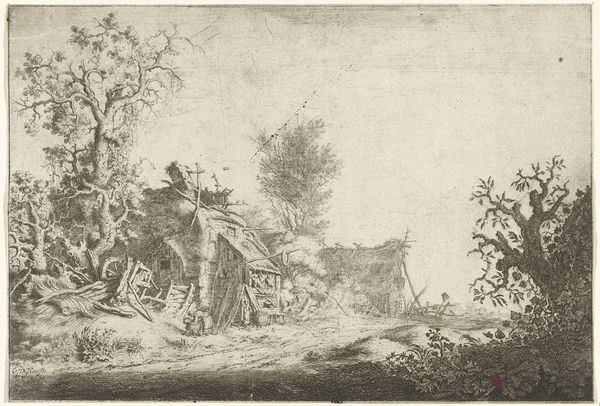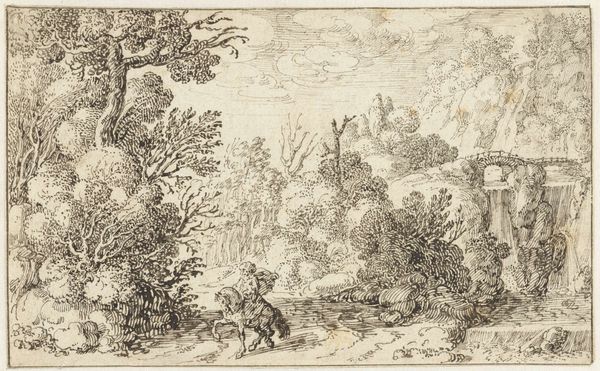
drawing, etching, ink
#
drawing
#
baroque
#
etching
#
landscape
#
etching
#
figuration
#
ink
Dimensions: height 81 mm, width 103 mm
Copyright: Rijks Museum: Open Domain
This etching by Willem Basse, made in the 17th century, depicts a pastoral scene with a flute-playing satyr surrounded by figures in a wooded landscape. The satyr, a hybrid creature from Greek mythology, embodies primal instincts. The flute symbolizes the harmony of nature, echoing through time, as seen in Arcadian landscapes from ancient Greece to the Renaissance. This symbol of music transcends cultures. Consider Pan, the Greek god of the wild, whose pipes evoked both terror and ecstasy. Similarly, the satyr embodies the duality of human nature: civilized intellect versus untamed desires. This tension surfaces in art again and again. Think of the Dionysian rituals, where music and dance led to ecstatic release and a blurring of the boundaries between human and animal. The image invites us to confront our own inner wilderness, our deep-seated urges. It reminds us that these forces, though often suppressed, are an integral part of what makes us human. The satyr's music is a call—a call to acknowledge and integrate these hidden aspects of ourselves.
Comments
No comments
Be the first to comment and join the conversation on the ultimate creative platform.

